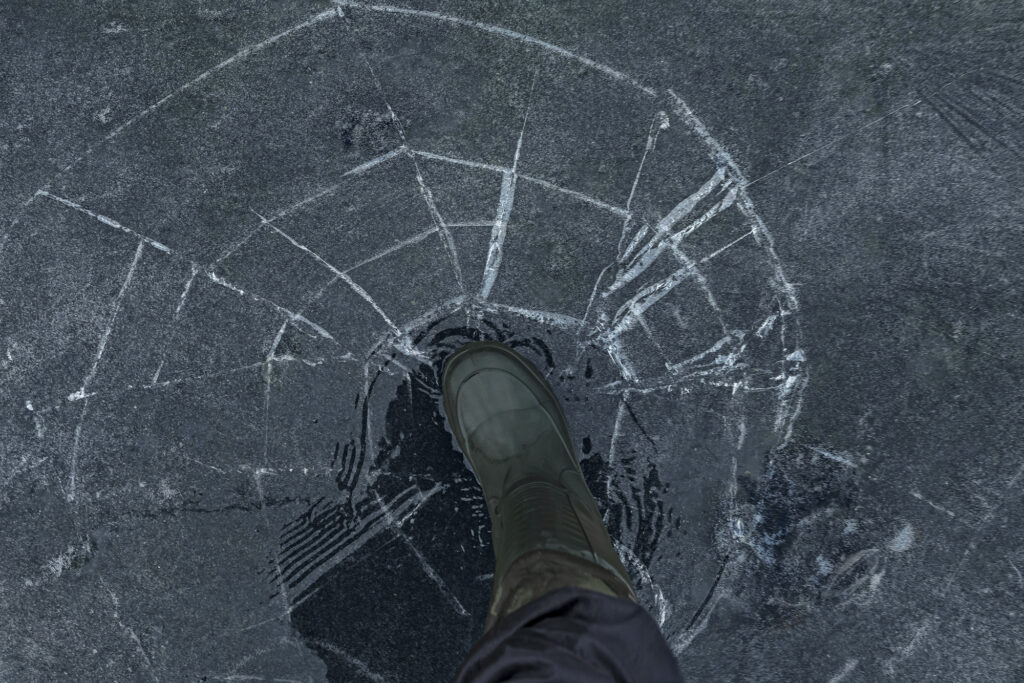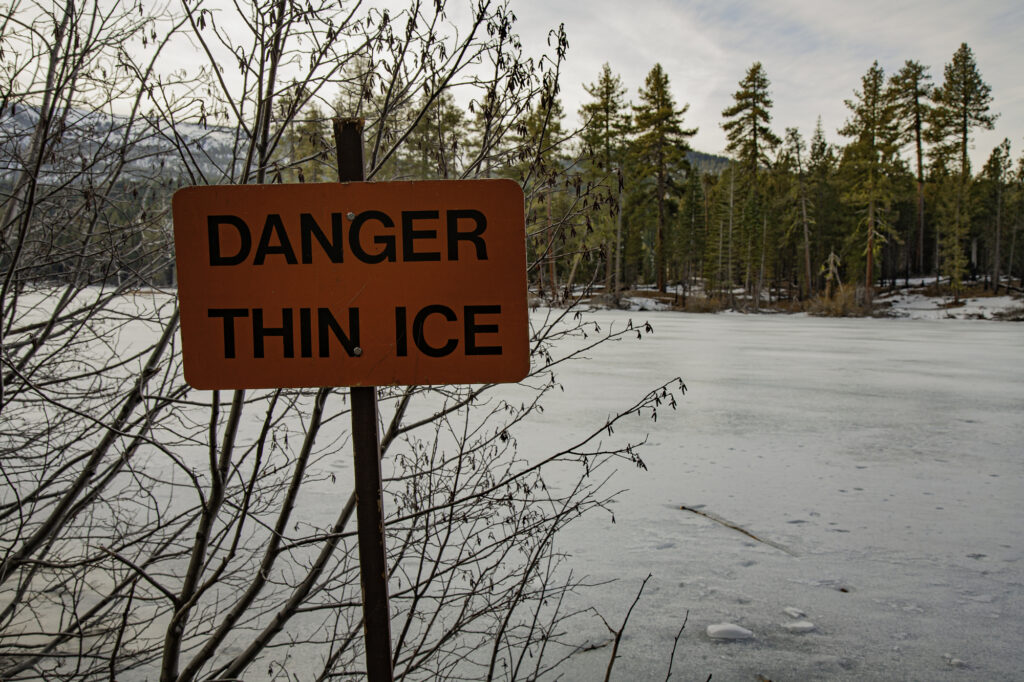Ice fishing can be a dangerous experience if you’re not properly prepared. If you’re not careful about how safe the ice is, based on several factors, it could become problematic and lead to injury.
When it comes to ice fishing, the thickness, color, and texture of the ice should be considered. To increase protection, fishermen should also keep necessary safety items such as ice cleats and claws in their inventory. Failure to ensure safety can result in a variety of injuries including frostbite, sprains, fractures, and hypothermia.
For the rest of this article, we will help you explore what you need to understand the ice, the necessary safety items, and the various risk factors while ice fishing.

Ice Characteristics
Here is a list of things you should keep an eye on when you’re out on your fishing trip:
How Thick Should Ice Be For Ice Fishing?
Ice should be at least 2.5 to 4 inches thick for walking, which goes up to 12 inches for small pick-up trucks. This is the most important characteristic you should keep an eye on, as thinner ice can cause you to fall into the water.
Ice closer to the shore will be thinner than the ice further out because the shore emits heat. The ice around large objects, such as fallen tree branches and rocks, also tends to weaken. Keep checking the ice as you go along, and take smaller steps to avoid injuries. Our article How Thick Should Ice Be For Ice Fishing? goes into further detail.
Ice Quality
There are different textures of ice, and some are stronger than others. The strongest kind of ice is clear and provides stability. It forms when temperatures have been cold for a while and can easily support your weight. Just keep an eye on the thickness.
The second type is opaque ice, which forms when fallen snow freezes on top of an ice sheet. This one can be dangerous because the snow may freeze over ice that isn’t as strong and may not be able to take your weight. It is about half as strong as clear ice on average.
The third and weakest type of ice is greyish, it looks rotten. This kind of ice generally begins to appear when the weather gets warmer, and it is best to avoid it completely. It may not be able to support your weight.

Dangers of Ice Fishing:
Various things can go wrong when you’re ice fishing.
Falling
Falling on the ice without breaking up can cause sprains and fractures. Invest in a pair of ice cleats to ensure gripping power and take small steps. Watch out for slippery areas with water on them, as they are especially dangerous.
The most feared injury while ice fishing is falling through the ice. If this happens, hypothermia can set in quickly, especially if there isn’t a heat source nearby.
Frostbite
Even though this is the most commonly known injury, it is fairly rare. Still, it would be best to ensure proper clothing and insulation to avoid it altogether as it can get very cold.
Fishing Hooks Injuries
Working with bait is a delicate process. You could end up cutting your hand or face if you’re not careful. Invest in a pair of warm gloves that allow dexterous work while keeping you warm. This is quite a common injury among fishermen, especially when their hands aren’t working well because of the cold.
Carbon Monoxide Poisoning
You must set up a camp if you plan to stay out on the ice. Most low-quality cheap heating systems emit carbon monoxide and can harm you if you don’t ensure proper ventilation in your tent. Invest in a good quality heating system to be even safer.
Safety Gear
Here is a list of things that you should take along on your trip for safety:
- Ice claws
- Ice cleats
- Spud bar
- Floatation clothing
- Measurement device to measure ice thickness
- Throw rope